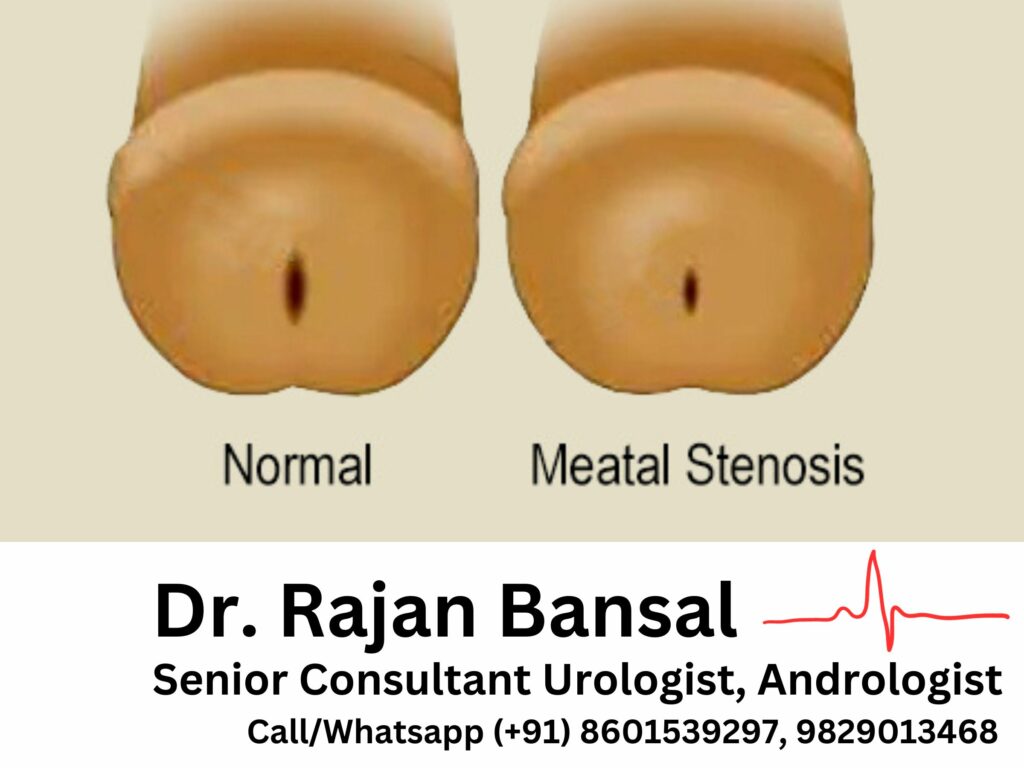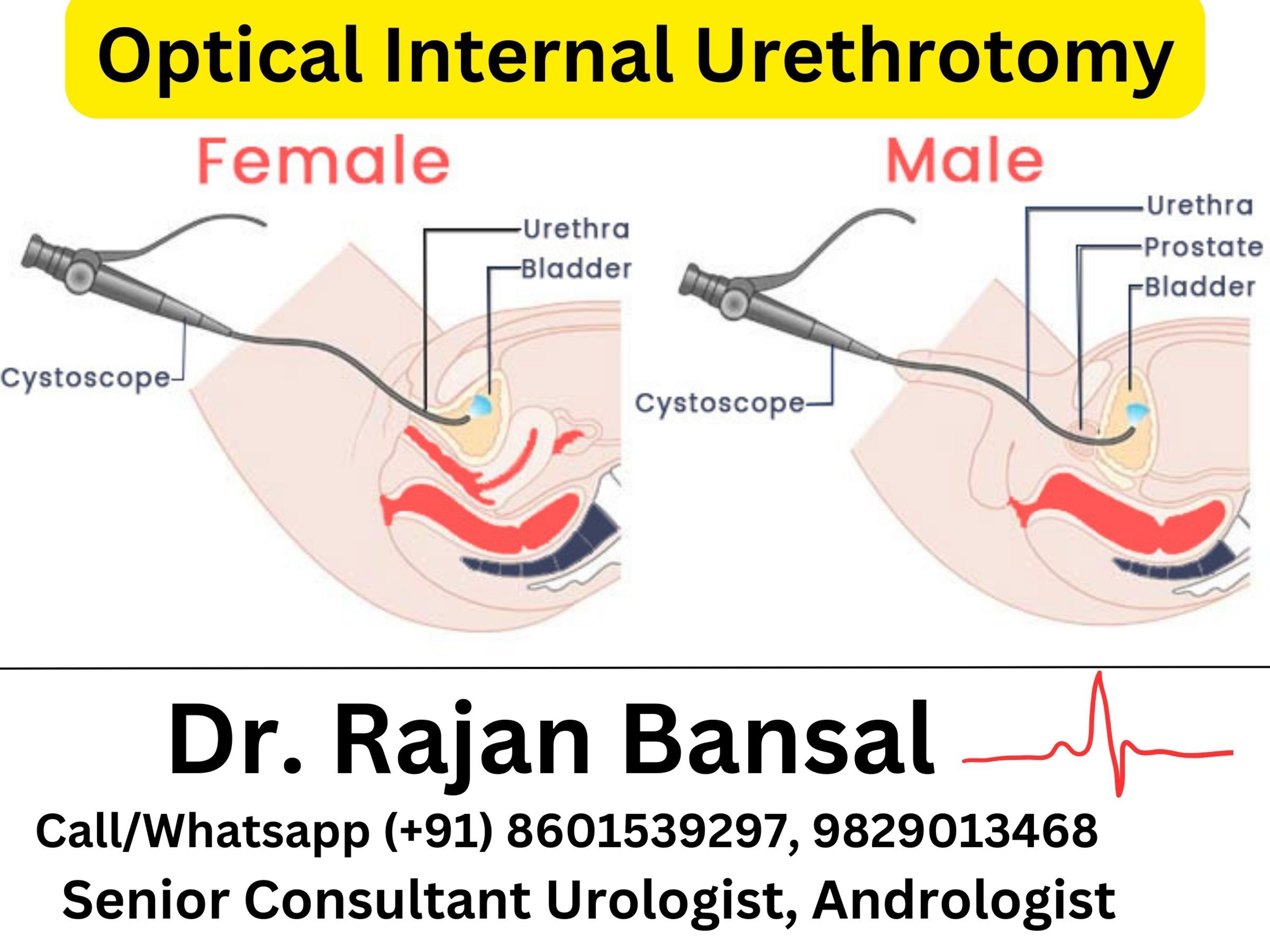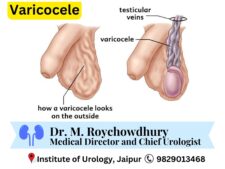Meatal stenosis, a condition characterized by the narrowing of the urethral opening (meatus), represents a significant urological concern, especially in young boys following circumcision or individuals experiencing urethral irritation or trauma. This intricate issue warrants an in-depth understanding. In this comprehensive exploration, we delve into the multifaceted dimensions of meatal stenosis, encompassing its etiology, clinical manifestations, diagnostic intricacies, and a comprehensive elucidation of available treatment modalities.

Etiology and Underlying Factors:
- Trauma and Irritation: Direct trauma or persistent irritation to the urethra, stemming from repeated instrumentation, catheterization, or infections, may trigger the formation of scar tissue, resulting in the narrowing of the meatus.
- Inflammation-mediated Complications: Chronic inflammation within the urinary tract, commonly associated with recurring urinary tract infections (UTIs) or other urological conditions like BXO (Balanitis Xerotica Obliterans), could provoke scarring and the ensuing narrowing of the urethral opening.
- Post-Circumcision Sequelae: Meatal stenosis often emerges as a sequel to circumcision in boys. The removal of the foreskin can expose the urethral opening, leading to irritation, inflammation, scarring, and subsequent constriction or narrowing of the meatus.
Clinical Presentation and Recognizable Symptoms:
The signs and symptoms associated with meatal stenosis can include:
- Urinary Discomfort: Individuals with meatal stenosis often experience discomfort or pain during urination. This discomfort can range from mild irritation to a burning sensation while passing urine.
- Altered Urinary Stream: The narrowing of the urethral opening can result in changes in the urinary stream. This may include a reduced or diminished urine flow, spraying of the urine stream, or an altered trajectory of the urinary stream.
- Urinary Frequency: Some individuals may experience increased urinary frequency, feeling the need to urinate more often than usual. This frequent urge to urinate can be due to incomplete bladder emptying caused by the narrowed meatus.
- Post-Void Dribbling: After urination, individuals with meatal stenosis might experience dribbling or leakage of urine from the urethra, even after completing the act of voiding.
- Urinary Tract Infections (UTIs): The narrowed urethral opening can lead to inadequate bladder emptying, potentially increasing the risk of recurrent urinary tract infections. UTIs may present with symptoms such as urgency, frequency, and discomfort during urination.
- Difficulty in Initiating Urination: Some individuals may find it challenging to start urinating due to the restricted meatus, leading to delayed initiation of the urinary stream.
These symptoms can vary in severity among affected individuals, and the presentation may depend on the degree of narrowing in the urethral opening.
Diagnostic Approaches and Assessments:
The diagnosis of meatal stenosis involves a thorough assessment to confirm the narrowing of the urethral opening (meatus) and rule out other potential urinary conditions. Here are the common investigations and assessments used in diagnosing meatal stenosis:
- Medical History and Physical Examination:
- A detailed medical history discussion to understand the individual’s urinary symptoms, history of circumcision (if applicable), and any prior trauma or instrumentation involving the urethra.
- A comprehensive physical examination focusing on inspecting the meatal region and assessing the appearance and size of the urethral opening.
- Urinalysis:
- A urinalysis is performed to assess for any signs of infection, blood in the urine, or other urinary abnormalities. This helps rule out concurrent urinary tract infections or other urinary conditions presenting similar symptoms.
- A urinalysis is performed to assess for any signs of infection, blood in the urine, or other urinary abnormalities. This helps rule out concurrent urinary tract infections or other urinary conditions presenting similar symptoms.
- Uroflowmetry:
- Uroflowmetry measures the rate and pattern of urine flow during voiding. It assists in detecting abnormalities in the urinary stream, such as a decreased flow rate or alterations in the flow pattern, characteristic of meatal stenosis.
- Uroflowmetry measures the rate and pattern of urine flow during voiding. It assists in detecting abnormalities in the urinary stream, such as a decreased flow rate or alterations in the flow pattern, characteristic of meatal stenosis.
- Cystoscopy:
- Cystoscopy is a diagnostic procedure that involves using a cystoscope, a thin tube with a camera, to visualize the interior of the urethra and bladder. It allows direct visualization of the meatus to confirm the presence and extent of stenosis. During cystoscopy, the urologist examines the appearance of the urethral opening and assesses the severity of narrowing.
- Cystoscopy is a diagnostic procedure that involves using a cystoscope, a thin tube with a camera, to visualize the interior of the urethra and bladder. It allows direct visualization of the meatus to confirm the presence and extent of stenosis. During cystoscopy, the urologist examines the appearance of the urethral opening and assesses the severity of narrowing.
- Ultrasound or Imaging Studies (Rarely):
- In some cases, ultrasound or imaging studies, such as a retrograde urethrogram or pelvic ultrasound, may be conducted to evaluate the urinary tract anatomy and rule out other urinary abnormalities or complications associated with meatal stenosis.
Treatment Modalities and Management Strategies:
the treatment of meatal stenosis typically involves various approaches aimed at widening the narrowed urethral opening to restore normal urinary flow and alleviate associated symptoms. Here are the common treatment options:
- Topical Therapies:
- Steroid Creams: Application of topical steroid creams or ointments to the affected area may help reduce inflammation and soften scar tissue, facilitating meatal dilation.
- Steroid Creams: Application of topical steroid creams or ointments to the affected area may help reduce inflammation and soften scar tissue, facilitating meatal dilation.
- Meatal Dilation:
- Manual Dilation: This procedure involves the gentle stretching or widening of the narrowed meatus using specialized instruments under local anesthesia. It aims to gradually expand the urethral opening to improve urine flow.
- Balloon Dilation: In some cases, a balloon catheter is inserted into the urethra and inflated to widen the meatus. This technique helps stretch the narrowed area, allowing for better urinary passage.
- Surgical Interventions:
- Meatotomy: In more severe or refractory cases, a meatotomy may be performed. This surgical procedure involves making an incision or small cut in the narrowed meatus to widen it, allowing for improved urinary flow. It is typically done under local or general anesthesia and is a relatively straightforward outpatient procedure.
- Meatotomy: In more severe or refractory cases, a meatotomy may be performed. This surgical procedure involves making an incision or small cut in the narrowed meatus to widen it, allowing for improved urinary flow. It is typically done under local or general anesthesia and is a relatively straightforward outpatient procedure.
- Follow-up Care:
- After any intervention, proper post-procedural care is essential. This may include regular follow-up appointments to monitor healing, manage any discomfort or complications, and ensure optimal urinary function.
The choice of treatment depends on the severity of the stenosis, the presence of associated symptoms, and the patient’s overall health condition. An expert urologist will determine the most suitable treatment approach based on individual circumstances.
It’s crucial to note that while these treatments aim to widen the urethral opening and improve urine flow, there might be a possibility of recurrence or complications. Therefore, post-treatment monitoring and follow-up care play integral roles in e nsuring the effectiveness of the chosen intervention and the well-being of the individual affected by meatal stenosis.
Preventive Measures and Conclusion:
Preventing meatal stenosis primarily involves minimizing potential sources of urethral irritation or trauma, particularly in the post-circumcision period or during medical interventions involving the urethra. Early identification, prompt diagnosis, and appropriate management strategies play pivotal roles in preventing complications, preserving urinary function, and enhancing the overall quality of life for individuals affected by meatal stenosis.
Best Hospital for Meatal Stenosis Treatment – Institute of Urology, C Scheme, Jaipur
Institute of Urology, C Scheme, Jaipur stands as the ultimate destination for advanced urological procedures and men’s health related problems since over two decades now. We are a pioneer in the field of urology, the first single super speciality Urology hospital in the state of Rajasthan. We continuously strive to bring the latest and the best of advancements in urology under our roof. This enables us to serve as a hospital enabled with “Total Urology Care Under One Roof”.
You can also avail the facility of online consultation before visiting us in person in order to discuss your problems with our Senior Urologist. We can be reached at the following numbers:
Dr. M. Roychowdhury – 9929513468
Dr. Rajan Bansal – 8601539297







